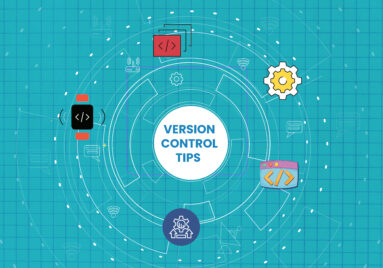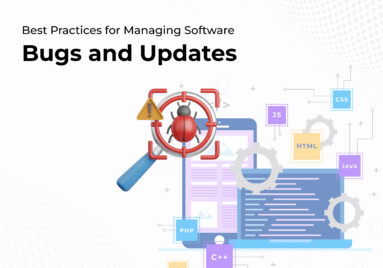What is DevOps culture?
DevOps culture is a collection of practices and values that unite development (Dev) and operations (Ops) teams to collaborate together across the whole life cycle of a software product. As opposed to classical development practices, where these two teams typically function in safe environments, DevOps places great emphasis on continuous collaboration, automation, and feedback loops.
At its core, DevOps culture revolves around:
Collaboration: Development and operations teams work more cooperatively and frequently to enable smoother processes.
Automation: Tasks such as testing, deployment, and monitoring are automated to maximise efficiency and reduce mistakes.
Continuous Improvement: A commitment to continuously refining systems and processes via feedback loops.
Shared Responsibility: All, from developers to operations teams, share responsibility for the success of the product, not certain functions.
By establishing a DevOps culture, organisations are able to bridge the gap between operations and development and attain faster delivery cycles, better software quality, and customer satisfaction.
The Core DevOps Culture Principles
To understand how DevOps culture functions in reality, its most vital principles need to be broken down:
Collaboration and Communication DevOps eliminates silos between the operations and development teams. Instead of functioning in silos, these teams collaborate from the start of the project to completion, aligning with each other throughout. This communication culture is facilitated by constant meetings, shared tools, and common targets.
Automation is one of the cornerstones of DevOps culture. By automation, routine tasks such as code testing, integration, deployment, and monitoring can be executed to enable teams to concentrate on more value-added tasks. Automated CI/CD pipelines enable code changes to be testable, integratable, and deployable in a quick manner without a compromise in quality.
Continuous monitoring and feedback are the highest priority for DevOps teams in software development. This means that issues are detected earlier, defects are resolved quicker, and customer feedback is incorporated into future releases. Through real-time logging and monitoring tools, teams track performance and debug bottlenecks prior to their becoming serious issues.
Infrastructure as Code (IaC) With infrastructure as code, infrastructure can be provisioned and managed through code rather than through manual processes. It offers more consistency, fewer errors, and quicker deployment. Infrastructure can be versioned like application code, making it scalable and repeatable.
Security as Code Security is no longer a separate process to be taken up at the end. Security is integrated in every step of development through practices such as DevSecOps. What this means is that security considerations are baked into the code and automated security scans, threat scanning, and compliance checks are all performed along the pipeline.
Benefits of DevOps Culture in Developing High-Performing Teams
Having spoken about the philosophy of the DevOps culture, let us see how it helps in creating high-performance teams:
Faster Delivery Cycles The greatest benefit of embracing DevOps is the speed boost in delivery of new features, releases, and patches by the team. With automation and continuous integration, the teams can leapfrog from development to deployment within minutes or hours, and the outcome is massive time-to-market.
Improved Quality and Stability End-to-end testing and integration lead to no compromise on quality. Early detection of bugs helps ensure that software is not just more stable but also less likely to fail when it is made live. Through automated monitoring, teams can deal with performance problems even before the end-users complain about them.
Enhanced Collaboration and Innovation With the integration of development, operations, and even security teams, DevOps encourages a culture of collaboration where everyone has a shared responsibility for the product. This fosters a culture of innovation, where ideas are freely shared and continuous improvement is encouraged.
Better Customer Satisfaction As DevOps allows for faster delivery of new features and faster response to issues, customers receive a more stable product and an overall better experience. By making it possible for the team to respond to customer feedback in a quicker manner, they are able to accept changing requirements and ensure that the software is meeting the needs of the users.
Better Employee Morale. In a DevOps setting, everyone has a stake in the product’s success. A culture of shared responsibility and an emphasis on collaboration leads to a healthy working environment. Employees are more empowered, motivated, and engaged to be working towards the success of the group, leading to better performance as a whole.
How to Build a DevOps Culture in Your Organization
Building a DevOps culture cannot be achieved over a single night; it requires thought, the correct tools, and commitment by the leaders. Below are a few things that you can implement in order to develop DevOps culture in your firm:
Start with Leadership Support Top-down support is necessary for DevOps culture. Leaders need to be aware of the significance of DevOps and must be ready to transform. They will provide resources and motivation that are needed to make it a success.
Build a Collaborative Culture Foster open communication among teams and focus everyone on the same goals. You can accomplish this by conducting regular meetings, forming cross-functional teams, and fostering mutual responsibility for product success.
Automate Where Possible Determine the tasks that are repetitive and research automation tools that will make your processes more efficient. CI/CD pipelines, infrastructure as code, and automated testing will cut down on manual effort dramatically and accelerate workflows.
Establish Continuous Feedback Mechanisms Use software to record real-time feedback from team members and end users. Keep the feedback loop continuous and issues addressed promptly. This can be done using surveys, issue trackers, or performance dashboards.
Invest in the Right Tools DevOps utilises an integrated collection of tools for monitoring, security, continuous integration and deployment, and version control. Invest in Jenkins, Git, Docker, Kubernetes, and monitoring tools such as Prometheus or Datadog for your DevOps initiative.
Train and Enable Your Teams Ensure your teams have the necessary skills and knowledge to work in a DevOps environment. Organise training sessions and workshops, and encourage knowledge-sharing practices to make everyone familiar with the principles and tools of DevOps.
DevOps culture is not so much about embracing a collection of tools or practices; it’s about building teamwork, communication, and continuous improvement throughout every phase of the software development lifecycle. By adopting DevOps culture, organisations can create high-performing teams that are faster, more efficient, and better able to deliver high-quality software. By putting the right mindset, tools, and processes in place, your team can achieve the full value of DevOps and achieve substantial business outcomes.





